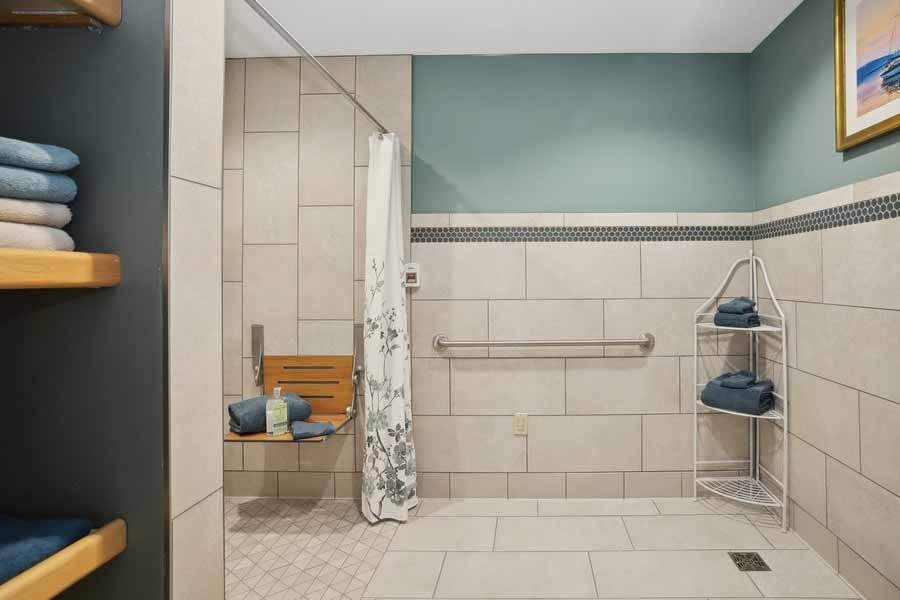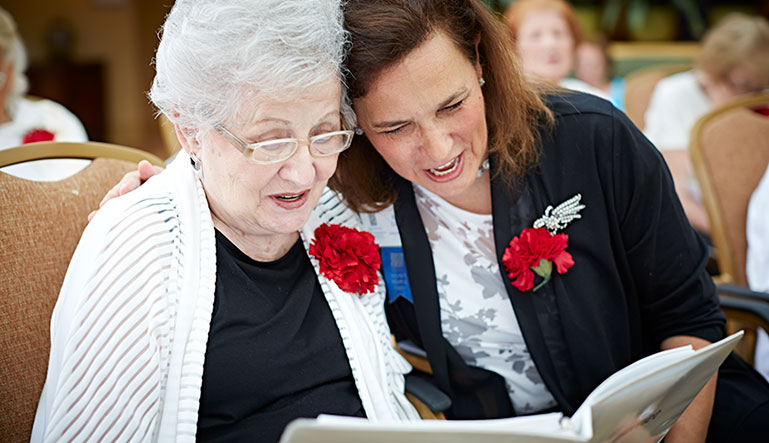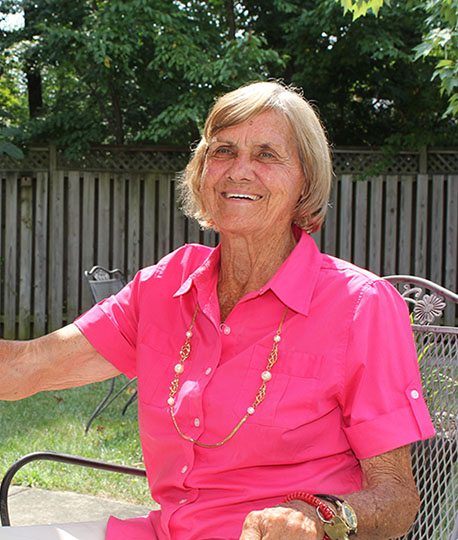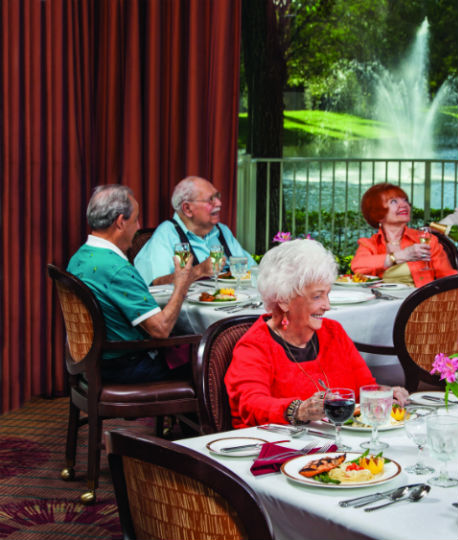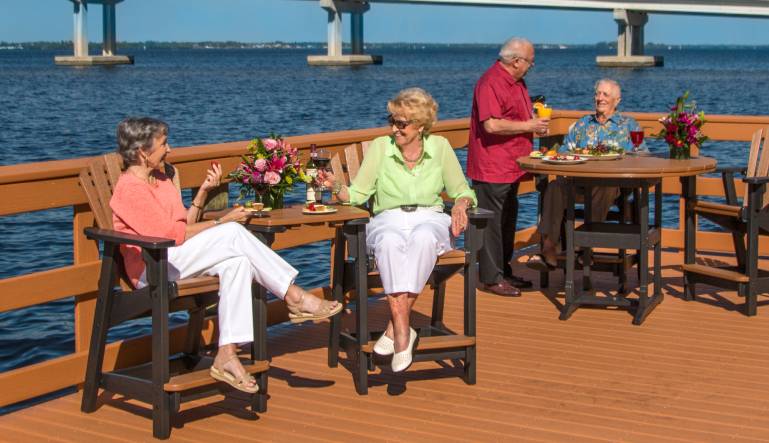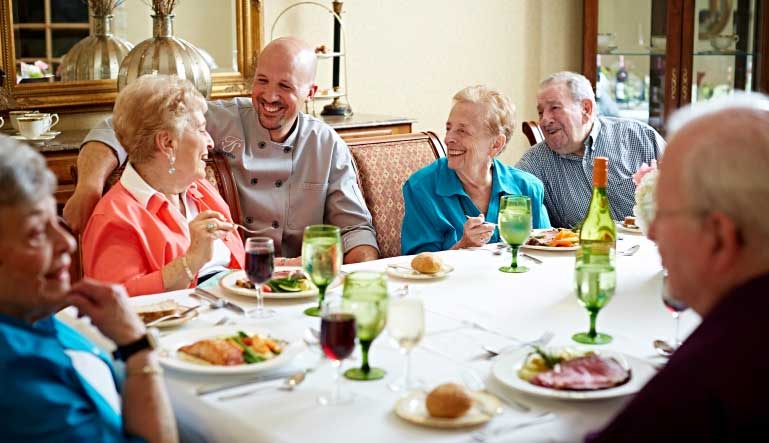You hear it all the time: Sixty is the new forty. Seventy is the new fifty. With people living longer, yesterday’s definitions of “old” no longer apply.
Today’s older adults are redefining what is possible later in life. More and more, stories appear in the news about people in their seventies and eighties—and even nineties—running road races, doing gymnastics, performing stand-up comedy, even going into the recording studio.
Perhaps that’s why, just as “old” no longer describes today’s aging adults, “retirement community” no longer describes the incredible variety of living options available to people in their later years. The range is remarkable. Some choose 55-plus communities that attract empty-nesters. Many prefer independent living communities that provide activities and dining. And others opt for assisted living communities, where residents need help with daily tasks such as getting dressed in addition to having access to nursing care. No matter what level of services and amenities offered, however, what these senior living communities have in common is that they are not about slowing down but ramping up—and living life to its fullest.
55+ Communities vs. Independent Living
For most healthy adults considering moving to a senior living community for the first time, the two most common options are 55-plus and independent living communities. Although there’s no hard-and-fast definition of either type, there are key differences in how they tend to be described or categorized. Understanding those differences and what is more typical of one over the other can help you evaluate which would better serve your needs.
55+ Communities vs. Independent Living Comparison Table |
||
|
|
55+ Communities |
Independent Living |
|
What services are provided? |
55+ complexes offer the convenience of providing maintenance of the building, grounds and apartment.
|
Independent living communities offer a stress-free lifestyle where the hassles of life—like home upkeep, cooking and cleaning—are taken care of so you can spend more time enjoying all the activities and amenities your community offers. |
|
What amenities are provided? |
There may be a clubhouse with planned social activities in a 55+ community. The availability and quality of amenities can vary widely by complex. |
Convenient access to on-site shared dining spaces, pools, libraries, game rooms and a wide variety of community activities ensures that there’s never a shortage of ways to spend your days in independent living. |
| Own or rent? | There are many 55+ communities where residents own their houses or condominiums, while others may offer rental properties. Bear in mind that 55-plus communities featuring home ownership are likely governed by a homeowners association (HOA) and include an HOA fee. Also factor into your decision-making the lack of flexibility when selling a house in a 55+ community. Often the choice is limited to approved realtors and the target population of purchasers is limited to the 55+ age range. | Independent living residents generally rent their houses or apartments, although the “rent” includes much more than a roof over one’s head. Ownership is more typical of 55+ communities, while renting is more typical of independent living, but neither community type is exclusively one or the other. |
|
How much does it cost? |
The cost to rent a senior apartment varies. There are, however, affordable options like low-income apartments that cap rent and utilities at about 30 percent of income. Market rate apartments with costs at or slightly below the cost of local all-age apartments and luxury senior apartments are other available options. |
Communities vary widely in terms of cost, which can range from $2,000 to $5,000 or more a month. A number of factors determine what you pay, like the type of community and location. Download our FREE Guide to the Cost of Senior Living eBook to learn more and get the answers you need. |
|
How do I find a community near me? |
Your best bet is to search online for 55+ communities or contact your local housing authority and ask about senior apartment options in your area. |
The best place to start is to search online for “independent living communities” or use Five Star’s easy Find a Community search tool to discover select communities in your area. |
4 Important Questions to Ask When Deciding Between a 55+ Community and Independent Living
Are you a DIYer or are you ready to give up the to-do list?
People living in 55-plus communities can purchase housekeeping, lawn care and other services just as they could for their prior home. But that means managing various vendors and costs can add up quickly. Independent living residents enjoy the convenience of living within a community where services and amenities such as housekeeping, dining and transportation are included in the monthly fee. In some instances, independent living residents have the option of assistance with daily tasks and support services if needed, which is important for residents who have chronic or degenerative conditions.
Do you like an active social life?
While both options present opportunities for social gatherings, independent living communities typically have program directors who fill the calendar with game nights, happy hours and plenty of other ways to make new friends and have fun. With 55-plus communities, the level of social activity may depend on the particular character of the neighborhood, especially if the community lacks an in-house programming component. Another important difference is that independent living communities typically include dining services led by highly trained chefs, while some 55-plus communities may offer communal kitchen and dining spaces but no food services.
Another amenity offered by independent living is complimentary transportation within a radius. This is a popular feature for individuals who are experiencing diminished vision or simply prefer to be chauffeured.
Would you like to worry less about the future?
No one likes to admit it, but eventually our bodies wear down and need some tender loving care. Some independent living communities include access to onsite physical and occupational therapy, assistive services and nursing care, all to help residents maintain their highest level of independence for as long as possible. Availability of these services may vary widely in 55-plus communities.
How do you define “independence?”
For some, independence means doing everything or most things yourself, as is more likely in a 55-plus community. For others, independence may include finally being free of household chores, maintenance, grocery shopping and other tasks so you can do more of what you love or have been meaning to get to—such as traveling the world, visiting the grandkids or pursuing a hobby or passion that for years has been filed under “Someday.” If the latter, an independent living community may be for you.
Independent living communities: a greater value?
We’re biased, of course, but based on all these criteria, the scales seem to tip in favor of independent living communities as offering greater value—and a smarter long-term strategy—when considering options for a “retirement” community. If you would like to be freed of home maintenance, errands and obligations, and instead spend your time choosing from an array of activities and outings with a lively social circle of friends—what some might call real independence—take a look at independent living communities. There’s nothing retiring about them!
See the difference
Make your declaration of independence. Find out if there’s a Five Star Senior Living community near you. We’ll arrange a tour so you can see for yourself just how much you have to look forward to.


